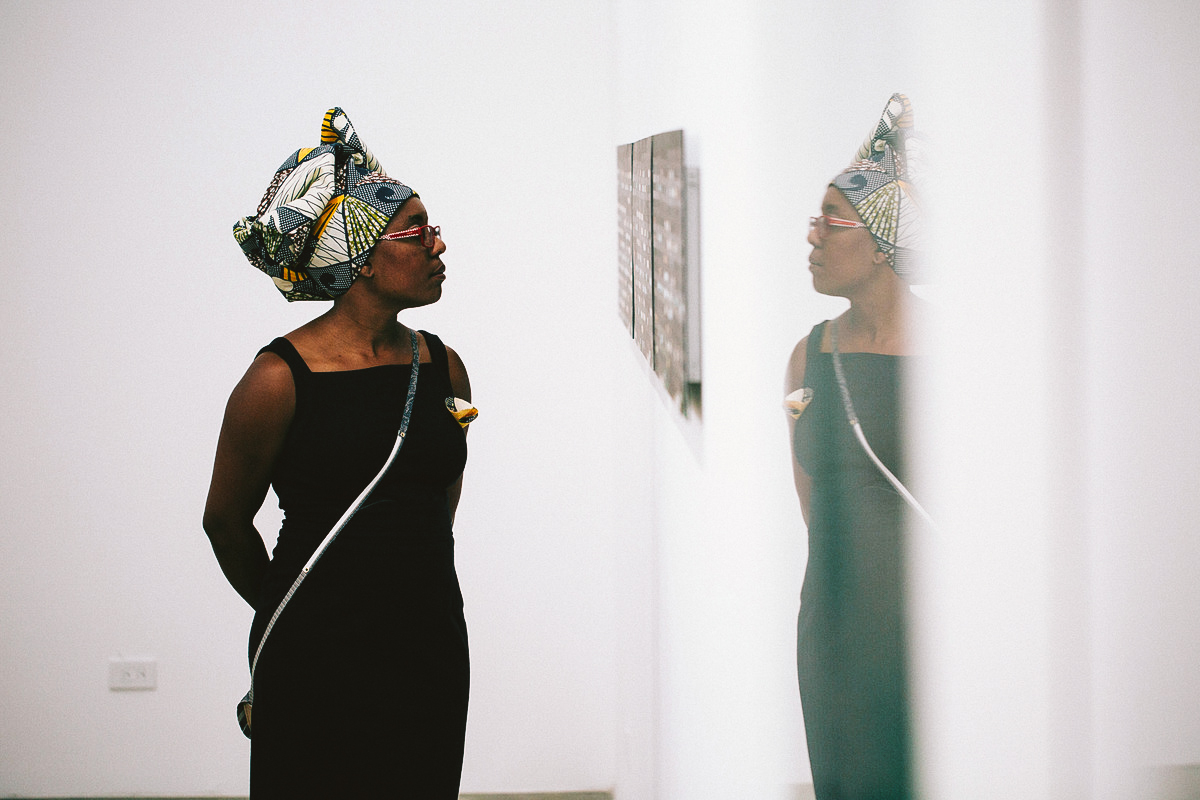The Art World Creates Valuable Impact. Here’s Why.

Photo by Robert Anthony
The impact and the importance of Art in our society are undoubtable.
Art has always been a big part of our lives and our nations as a way of expression and an escape; binding communities, transforming feelings into three dimensional objects and images.
Art is a bridge between communities and time. It is vector of change, a way for the misunderstood to vehicle an idea shared by groups of people; allowing the remote to be seen and felt.
No one can deny the powerful message Picasso conveys in Guernica and his testimonial to the horror of the Spanish civil war, the engaged activism that is seen in the work of Ai Weiwei or the inspiring and compelling images of Shirin Neshat. Art is a loud messenger and a powerful witness of our times and of our societies. It can soothe the wounded, give a voice to the muted, inspire change and provide a gentle introduction to the foreign. Art is inclusive and complex; it can be at once a shield and a weapon, an advocate and an opponent, numerical and alphabetical, dark and light, a world of opposites interwoven into our human consciousness.
Artists of a gone by era are now part of our human heritage, the work of a few shared by many; inspiring current artists in their search for creativity and as of recent years indicating market trends and fluctuations.
A safeguard to recent financial crisis, art has become its own currency, with its own index. Galleries, Museums, auction houses and art fairs; trade, display, evaluate and speculate on canvases, sculptures and artifacts at an apparent unstoppable upward trend.
According to an annual report published by the European Fine Art Foundation; in 2014, the Art World reached its highest ever recorded level with a total of 51 Billion dollars worldwide.
The global art market is dominated by three major art markets; the US (39%), China (22%) and the UK (22%) – France being the 4th market with generated sales under a billion US dollars.
These numbers reflect our global economy. But this global prosperity has been met with an increasing political instability and art has become a safe haven to protect wealth, hence becoming a very appealing asset. Currencies may crumble, cars, yachts may depreciate but the value of a masterpiece will remain and even increase over time.
The internationalization of Art Fairs also reflects this trend. In just a decade, the number of international art fairs has increased from ten to sixty, which means that the market has seen a major shift from the gallery-based model to one that is increasingly dominated by fairs.
Online art sales also continue to gain prominence, accounting for an estimated 6% of global art and antiques sales by value. The highest-ranking art-specific sites in 2014 were Art.com, Artspace.com and Gagosian.com.
The Art world and its ever increasing market is worthy of being featured in the CSR arena. The role of Who Cares Chronicles is to identify and promote great CSR practices in all industries with the intention of having them duplicated.
A definite role model and leader in the art establishment is Christie’s. Their ART + SOUL, CSR strategy is perfectly curated and applied. Focusing on cultural stewardship, philanthropy, employee engagement and sustainability, ART + SOUL shows the effectiveness of Christie’s work and its impact in the art world. Below are a few practices that positions Christie’s in the art market as a positive and caring force.
- In 2013, Christie’s auctioneers assisted with more than 275 benefit auctions in 23 countries around the world, raising more than $96 million.
- To prevent the looting of archaeological sites and the destruction of historic buildings and monuments, Christie’s supports UNESCO’s campaign to raise awareness of looting in Iraq and Syria.
- Ivory: Christie’s condemns the slaughter of elephants for illegal elephant ivory. Christie’s does not sell modern ivory or unworked tusks of any age.
Although, we admire, celebrate and promote the work of leading corporations such as Christie’s, we would like to bring light to the initiative of Grammy Award winning producer and art lover Swizz Beatz.
One of the most recent and noteworthy shift in the art world was seen at the last Art Basel fair which took place in Miami in December. Who Cares Chronicles aims is also to feature game changers, individuals that manage to shift and change an industry by creating and implementing true caring initiatives. These individuals are Chief Care Officers by nature.
This year, Swizz Beatz hosted his No Commission Art Fair of the Dean Collection. His presentation allowed artists to showcase their work for free and take home 100% of their proceeds.
In an interview given to Billboard about why he chose to present his collection he was quoted saying, “It’s by the artist, for the artist, with the people. And I think a lot of people forgot the message of why they’re even going down to Basel. You’re going down to Basel because there are amazing, creative artists who took a lot of time out of their lives to put together some masterpieces and hope for entry in a great collection or for somebody to be inspired. And not taking anything away from Basel or from the galleries, but I just chose to do something different. And I think the world needs more powerful collaborations that are willing to push the envelope and not really follow the necessary rules that are laid out.”
With this initiative, Swizz Beatz raises a few great questions that need to be brought back to the Art’s world agenda. What is the impact of the art world? How an industry that generates astronomical revenues does give back? How can we preserve creativity, foster new artists and support existing’s ones in an ever increasing competitive market or more simply put how to preserve the intrinsic role of art in our society? For raising these questions and demonstrating that different is possible Swizz Beatz is most certainly a Chief Care Officer.
New art-selling companies seeking to establish themselves in a competitive marketplace are alert to the advantages of being conscious and caring and have integrated benefit auctions into their business models. Nonprofit organizations hosting benefit auctions are also instituting changes. A few may sometimes offer artists a portion of the proceeds.
A role model in the arena and also present at Art Basel this year is Smile Design Gallery. Led by Chief Care Officer, Doctor Lee Gause, Smile Design Gallery is a unique platform that has proven that art can do good. Smile Design Gallery merges art with the mission of providing dental treatment for people who need care. 100 percent of the value of art sold through Smile Design Gallery is matched in free dental care for the uninsured. To date the gallery has provided 360,000 USD worth of dentistry, completely free of charge for patients in need in the US, granting charitable dentistry in partnership with the Holocaust Survivors Initiative, The Bowery Mission, Urban Promise Camden and many more. This year, The Smile Design Gallery and Ty Hunter presented “Women in the Water” and “The Selfie Experience” at the Hotel Croydon in Miami. Guests viewed works by artists including: BK The Artist, Ivben Taqiy, Tripp Barnes, Steven Swancoat, UR New York, Tonia Calderon, Brent Eastabrook and Robert Peterson. 100 percent of the value of the art sold during the event will fund free healthcare.
Another great platform transforming the art market is Curators for a Cause, an organization co-founded by Monica Watkins, Jaci Berkopec and Erica Simone. CFAC was created for the purpose of utilizing art curations and sales to create positive social change, while generating funds for various philanthropic platforms and charity partner organizations.
With an annual global revenue of 51 Billion USD, one can only wonder what impact the art world has today or more precisely what should be the role of art today. The purpose of art is to inspire, make a space more beautiful. The purpose of art is to change a context, to provide a refuge for the mind.
In a world crippled by disease, political instability, inequality, economic and environmental turmoil, perhaps the role of art and its sales is to contribute to its primal essential role: make our world more beautiful. Art is one major form of response to the world, its power lies in the hands of the artists first but also the gallerist, and the buyer. Capturing the essence of our times and drawing attention to good is perhaps the best interest it can generate today.
FROM THE EDITOR
At Conscious, we feature powerful stories about global initiatives, innovation, community development, social impact and more. You can read more stories like this and connect with a growing community of global leaders when you join.



